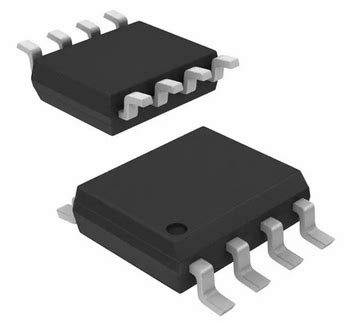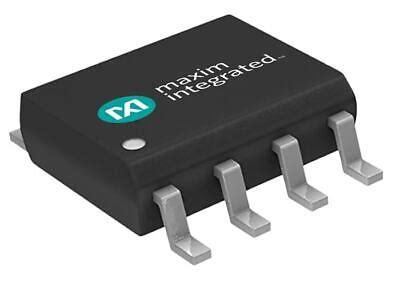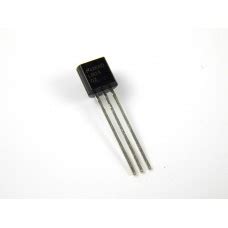What are Temperature Sensor ICs?
Temperature sensor ICs are integrated circuits that are designed to measure temperature and convert the measured value into a digital output. These ICs contain a sensing element, such as a thermistor or a thermocouple, along with signal conditioning and processing circuitry. The digital output can be easily interfaced with microcontrollers, microprocessors, or other digital systems for further processing and control.
Types of Temperature Sensor ICs
There are several types of temperature sensor ICs available in the market, each with its own advantages and limitations. Some of the most common types include:
-
Thermistor-based ICs: These ICs use a thermistor as the sensing element. Thermistors are resistors whose resistance changes with temperature. The IC measures the resistance of the thermistor and converts it into a digital output.
-
Thermocouple-based ICs: These ICs use a thermocouple as the sensing element. Thermocouples consist of two dissimilar metals that generate a voltage proportional to the temperature difference between the two junctions. The IC amplifies and digitizes this voltage to provide a digital output.
-
Semiconductor-based ICs: These ICs use a semiconductor junction, such as a diode or a transistor, as the sensing element. The forward voltage drop across the junction varies with temperature, and the IC measures this voltage to determine the temperature.
-
Resistance Temperature Detector (RTD) based ICs: These ICs use an RTD as the sensing element. RTDs are made of pure metals, such as platinum or nickel, whose resistance changes with temperature. The IC measures the resistance of the RTD and converts it into a digital output.
Advantages of Digital Temperature Sensor ICs
Digital temperature sensor ICs offer several advantages over traditional analog temperature sensors:
-
Digital Output: The digital output of these ICs can be easily interfaced with microcontrollers, microprocessors, or other digital systems without the need for additional analog-to-digital converters (ADCs).
-
High Accuracy: Digital temperature sensor ICs offer high accuracy, typically in the range of ±0.5°C to ±1°C, making them suitable for applications that require precise temperature measurements.
-
Wide Temperature Range: These ICs can measure temperatures over a wide range, typically from -55°C to +125°C, making them suitable for a variety of applications.
-
Low Power Consumption: Digital temperature sensor ICs consume very little power, making them ideal for battery-powered or energy-sensitive applications.
-
Small Form Factor: These ICs are available in small packages, such as SOT-23 or SOIC, making them easy to integrate into compact designs.
Popular Digital Temperature Sensor ICs
There are many digital temperature sensor ICs available in the market, each with its own features and specifications. Some of the most popular ICs include:
| IC | Manufacturer | Type | Accuracy | Temperature Range | Interface |
|---|---|---|---|---|---|
| DS18B20 | Maxim | Semiconductor | ±0.5°C | -55°C to +125°C | 1-Wire |
| LM75A | Texas Instruments | Semiconductor | ±2°C | -55°C to +125°C | I2C |
| MCP9808 | Microchip | Semiconductor | ±0.5°C | -40°C to +125°C | I2C |
| TMP102 | Texas Instruments | Semiconductor | ±0.5°C | -40°C to +125°C | I2C |
| ADT7410 | Analog Devices | Semiconductor | ±0.5°C | -55°C to +150°C | I2C |
DS18B20
The DS18B20 is a popular digital temperature sensor IC manufactured by Maxim Integrated. It uses a semiconductor-based sensing element and provides a digital output using the 1-Wire communication protocol. The DS18B20 offers an accuracy of ±0.5°C over the temperature range of -10°C to +85°C and can measure temperatures from -55°C to +125°C.
The DS18B20 is available in a TO-92 package and can be operated with a supply voltage ranging from 3.0V to 5.5V. It features a unique 64-bit serial code, which allows multiple DS18B20 sensors to be connected to the same 1-Wire bus, making it easy to implement multi-point temperature monitoring systems.
Interfacing DS18B20 with a Microcontroller
Interfacing the DS18B20 with a microcontroller is straightforward. The IC requires only one data line (DQ) for communication, along with a ground (GND) and a pull-up resistor connected to the supply voltage (VDD).
Here’s a simple example of how to interface the DS18B20 with an Arduino:
- Connect the GND pin of the DS18B20 to the GND pin of the Arduino.
- Connect the VDD pin of the DS18B20 to the 5V pin of the Arduino.
- Connect the DQ pin of the DS18B20 to a digital pin of the Arduino, say pin 2.
- Add a 4.7kΩ pull-up resistor between the DQ pin and the VDD pin.
Here’s a sample code snippet to read the temperature from the DS18B20 using the Arduino:
#include <OneWire.h>
#include <DallasTemperature.h>
#define ONE_WIRE_BUS 2
OneWire oneWire(ONE_WIRE_BUS);
DallasTemperature sensors(&oneWire);
void setup() {
Serial.begin(9600);
sensors.begin();
}
void loop() {
sensors.requestTemperatures();
float temperature = sensors.getTempCByIndex(0);
Serial.print("Temperature: ");
Serial.print(temperature);
Serial.println("°C");
delay(1000);
}
This code uses the OneWire and DallasTemperature libraries to communicate with the DS18B20. The requestTemperatures() function sends a command to the sensor to start a temperature conversion, and the getTempCByIndex(0) function reads the temperature value in degrees Celsius from the sensor with index 0.
LM75A
The LM75A is a digital temperature sensor IC manufactured by Texas Instruments. It uses a semiconductor-based sensing element and provides a digital output using the I2C communication protocol. The LM75A offers an accuracy of ±2°C over the temperature range of -25°C to +100°C and can measure temperatures from -55°C to +125°C.
The LM75A is available in an SOIC-8 package and can be operated with a supply voltage ranging from 2.8V to 5.5V. It features a user-programmable temperature threshold and hysteresis, making it suitable for temperature monitoring and control applications.
Interfacing LM75A with a Microcontroller
Interfacing the LM75A with a microcontroller is simple using the I2C communication protocol. The IC requires two lines for communication: SCL (serial clock) and SDA (serial data), along with a ground (GND) and a supply voltage (VCC).
Here’s a simple example of how to interface the LM75A with an Arduino:
- Connect the GND pin of the LM75A to the GND pin of the Arduino.
- Connect the VCC pin of the LM75A to the 5V pin of the Arduino.
- Connect the SCL pin of the LM75A to the SCL pin of the Arduino (A5 on most Arduino boards).
- Connect the SDA pin of the LM75A to the SDA pin of the Arduino (A4 on most Arduino boards).
Here’s a sample code snippet to read the temperature from the LM75A using the Arduino:
#include <Wire.h>
#define LM75A_ADDRESS 0x48
void setup() {
Wire.begin();
Serial.begin(9600);
}
void loop() {
Wire.beginTransmission(LM75A_ADDRESS);
Wire.write(0x00);
Wire.endTransmission();
Wire.requestFrom(LM75A_ADDRESS, 2);
byte msb = Wire.read();
byte lsb = Wire.read();
int16_t temperature = (msb << 8) | lsb;
float temperatureC = temperature / 256.0;
Serial.print("Temperature: ");
Serial.print(temperatureC);
Serial.println("°C");
delay(1000);
}
This code uses the Wire library to communicate with the LM75A over I2C. The Wire.beginTransmission() and Wire.endTransmission() functions are used to start and end the I2C transmission, respectively. The Wire.requestFrom() function is used to request two bytes of data from the LM75A, which represent the temperature value. The temperature value is then calculated by combining the two bytes and dividing by 256 to get the temperature in degrees Celsius.
MCP9808
The MCP9808 is a high-accuracy digital temperature sensor IC manufactured by Microchip Technology. It uses a semiconductor-based sensing element and provides a digital output using the I2C communication protocol. The MCP9808 offers an accuracy of ±0.5°C over the temperature range of -20°C to +100°C and can measure temperatures from -40°C to +125°C.
The MCP9808 is available in various package options, including MSOP-8 and DFN-8, and can be operated with a supply voltage ranging from 2.7V to 5.5V. It features a user-programmable temperature alert output, making it suitable for temperature monitoring and control applications.
Interfacing MCP9808 with a Microcontroller
Interfacing the MCP9808 with a microcontroller is similar to interfacing the LM75A, as both ICs use the I2C communication protocol. The MCP9808 requires two lines for communication: SCL (serial clock) and SDA (serial data), along with a ground (GND) and a supply voltage (VDD).
Here’s a simple example of how to interface the MCP9808 with an Arduino:
- Connect the GND pin of the MCP9808 to the GND pin of the Arduino.
- Connect the VDD pin of the MCP9808 to the 5V pin of the Arduino.
- Connect the SCL pin of the MCP9808 to the SCL pin of the Arduino (A5 on most Arduino boards).
- Connect the SDA pin of the MCP9808 to the SDA pin of the Arduino (A4 on most Arduino boards).
Here’s a sample code snippet to read the temperature from the MCP9808 using the Arduino:
#include <Wire.h>
#define MCP9808_ADDRESS 0x18
void setup() {
Wire.begin();
Serial.begin(9600);
}
void loop() {
Wire.beginTransmission(MCP9808_ADDRESS);
Wire.write(0x05);
Wire.endTransmission();
Wire.requestFrom(MCP9808_ADDRESS, 2);
byte msb = Wire.read();
byte lsb = Wire.read();
int16_t temperature = (msb << 8) | lsb;
float temperatureC = temperature / 16.0;
Serial.print("Temperature: ");
Serial.print(temperatureC);
Serial.println("°C");
delay(1000);
}
This code is similar to the LM75A example, with a few differences in the I2C address and the temperature calculation. The MCP9808 stores the temperature value in two bytes, which are combined and divided by 16 to get the temperature in degrees Celsius.

Applications of Digital Temperature Sensor ICs
Digital temperature sensor ICs find applications in a wide range of industries and projects. Some of the most common applications include:
-
HVAC Systems: Digital temperature sensor ICs are used in heating, ventilation, and air conditioning (HVAC) systems to monitor and control the temperature of indoor environments.
-
Automotive: These ICs are used in automotive applications to monitor the temperature of various components, such as the engine, exhaust system, and cabin.
-
Industrial: Digital temperature sensor ICs are used in industrial applications, such as process control, machine monitoring, and quality control.
-
Medical: These ICs are used in medical applications, such as patient monitoring, laboratory equipment, and sterilization processes.
-
Consumer Electronics: Digital temperature sensor ICs are used in consumer electronics, such as smartphones, laptops, and smart home devices, to monitor and control the temperature of the device and its components.

Conclusion
Digital temperature sensor ICs offer a convenient and accurate solution for measuring temperature in a wide range of applications. With their high accuracy, wide temperature range, low power consumption, and small form factor, these ICs are ideal for use in various projects and industries.
When selecting a digital temperature sensor IC for your project, consider factors such as the required accuracy, temperature range, communication interface, and package options. Popular ICs like the DS18B20, LM75A, and MCP9808 offer excellent performance and are easy to interface with microcontrollers using common communication protocols like 1-Wire and I2C.
By understanding the features and capabilities of digital temperature sensor ICs and following best practices for interfacing and programming, you can successfully integrate these sensors into your projects and create reliable and efficient temperature monitoring and control systems.

Frequently Asked Questions (FAQ)
-
What is the difference between a digital temperature sensor IC and an analog temperature sensor?
Digital temperature sensor ICs provide a digital output that can be easily interfaced with microcontrollers or other digital systems, while analog temperature sensors provide an analog output (usually a voltage or current) that requires additional signal conditioning and analog-to-digital conversion. -
Can I connect multiple digital temperature sensor ICs to the same microcontroller?
Yes, most digital temperature sensor ICs can be connected to the same microcontroller using a shared communication bus, such as I2C or 1-Wire. However, ensure that each IC has a unique address to avoid communication conflicts. -
How do I select the right digital temperature sensor IC for my project?
When selecting a digital temperature sensor IC, consider factors such as the required accuracy, temperature range, communication interface, and package options. Also, ensure that the IC is compatible with your microcontroller and the operating voltage of your system. -
What is the typical accuracy of digital temperature sensor ICs?
The accuracy of digital temperature sensor ICs varies depending on the specific IC and the temperature range. Typical accuracies range from ±0.5°C to ±2°C, with some high-end ICs offering accuracies as low as ±0.1°C. -
Can I use digital temperature sensor ICs in high-temperature environments?
Most digital temperature sensor ICs are designed to operate within a specific temperature range, typically from -55°C to +125°C. For high-temperature applications, you may need to use specialized ICs or consider alternative temperature sensing solutions, such as thermocouples or RTDs.

No responses yet